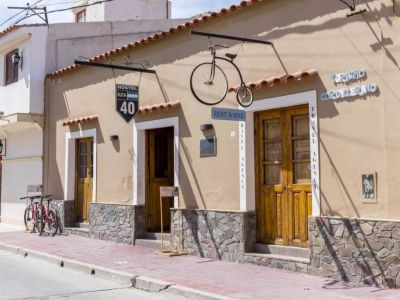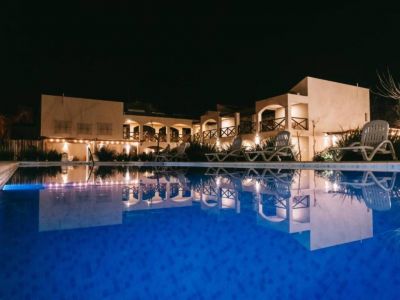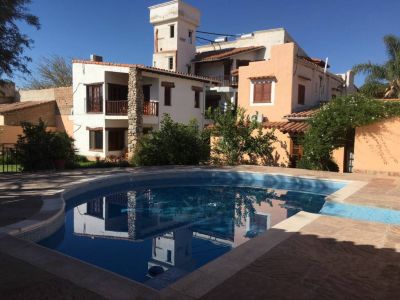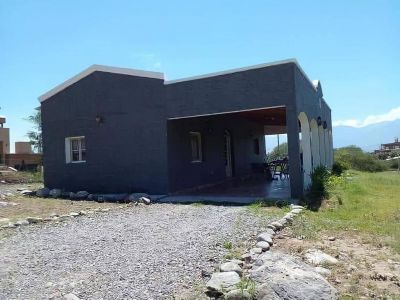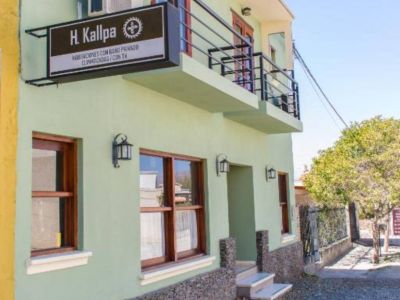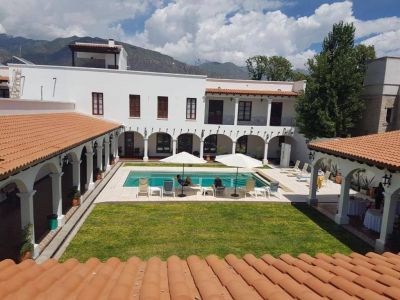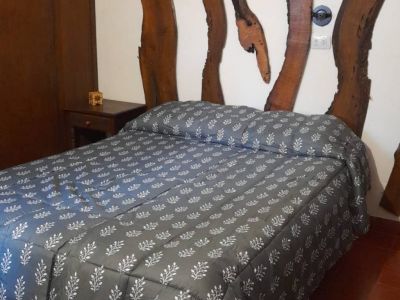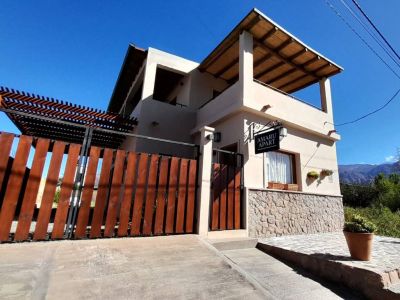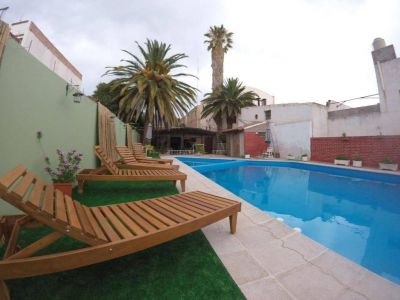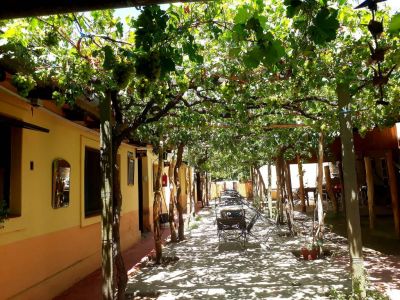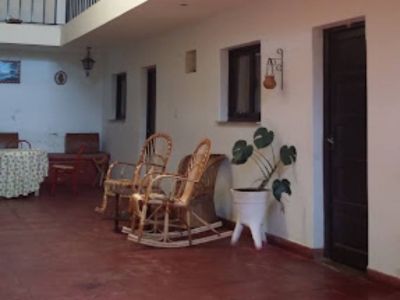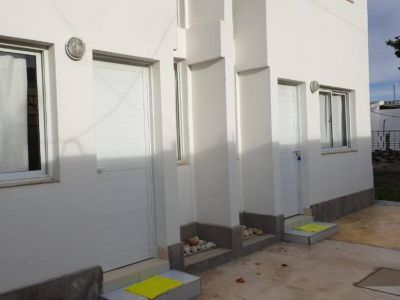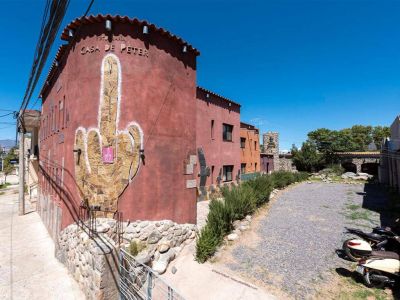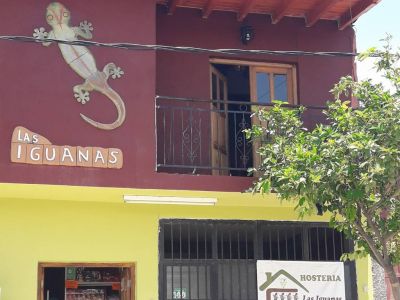El Esteco Winery, Premium Wines
Following the Wine Route, visitors may appreciate an interesting opening of the winemaking market onto the world of winery tourism, which lets visitors see the process of growing premium wine.<
As we toured around the Wine Route in the Calchaquí Valleys, we made a stop at El Esteco Winery, in Cafayate. This winery displays its dominion from its outstanding entrance. A large gate and a long access path led us to an impressive building featuring colonial style. Once inside, we found a small group of people about to start a guided tour around the venue and we were invited to join them. We were welcomed by Eduardo Cruz, our guide, and the tour began. Honoring the Founders The winery was created in 1892 under the name Michel Torino Bros.' La Rosa Wineries. In 1994, it was sold to Félix Lávaque, a winemaker who in turn sold it to a Swiss group that gave the company the image it has today: a premium winemaker.
The management of the vineyards and the technology used in the process were professionalized. The business was aimed at a consumer who knows how to drink good wine. Its name, “El Esteco”, derives from a legend from Salta which refers to a lost city. At first, almost all the production was exported. Today, 50% stays in the Argentinian market. In one of the rooms, we observed several casks which were no longer used and whose shape was different from the ones used today. The latter are made of French and American oak and can contain 225 liters of wine each. Eduardo explained that the wood provides taste and helps the wine properties remain intact for a longer period. Cafayate Land The vineyards, which occupy approximately 760 hectares planted with various kinds of grapes, embrace the venue. The plantations have the shape of trellises, whether regular or vertical, and they are the same every year. The grapevines with the thickest stems are the oldest. Weather conditions such as the great number of sunny days, scarce rainfalls, temperature extremes and altitude help produce premium wines. The dripping irrigation system is organized through channels and there are no plagues or fungi. The seeds, skins and stems from the previous harvest are used as natural fertilizer. The grapes are harvested by hand by about 200 people at night in order to avoid the heat. The grapes obtained feature the same characteristics as the previous harvests to avoid changes in the wine. Cafayate is proud to have the best torrontés wine in the country and its grapes have a golden hue. As we moved from one area to another, Eduardo answered several questions about the care of wine, the differences between wines from Cafayate and those of other origin, and the position occupied by El Esteco Winery in the international wine market. We enjoyed the interesting explanations. A Careful Process The red grapes are moved onto the large fermentation pools preserving their skin. The white grapes are peeled and only their juice undergoes the process of fermentation. Low temperature is essential at this stage. With the participation of technicians and enologists, the fermented wine is put in the oak casks and bottles to produce the desired wine. The recipe of the winery is jealously kept. Aging times play a substantial role. The bottling and labeling processes are performed automatically. The label is very important because it makes the wine quality stand out and there is one label for the local and a different one for the foreign market. The Most Longed-for Moment In a very pleasant environment, we started tasting a torrontés wine of the line called Elementos (Elements). Very leisurely, we learned to appreciate the bouquet. We were also told in which glass the wine should be served in order to preserve its aroma and what dishes accompany it best. Elementos, Ciclos, Don David and Altimus are the four wine kinds offered by the winery. Altimus, made up by four varietals, is a signature wine, the pride of the winery. It features a dark red hue with violet glitters, fruit and vanilla aroma. It spends 12 months in the cask and then it is aged in the bottle. It may be kept up to 14 years before it loses its properties. Andrés Höy, agricultural expert, devoted a minute of his time to round up our experience: “At El Esteco Winery, we give priority to the good assistance paid to our visitors. Our staff is bilingual and highly qualified to offer several kinds of tours and lectures according to the interest and nationality of each visitor. There are specific visits and they include part of the vineyards: irrigation, winds, pruning, and harvest. Others include the colonial architecture of wineries, respecting the origin of winegrowing”. At the end of the tour, Andrés had another surprise for us: we visited the old cellar, which still works in the main building. Only very special visitors may access this place. The floors and ceilings are original and the atmosphere is quite distinguished with a room containing old casks and wine vessels. Pictures and photographs reflect the history of the estate, its corporative and political swings. Some of the wines stored here are not launched to the commercial market. Sunshine, Pleasure and Relax Patios de Cafayate, the boutique hotel lying next to the winery and featuring the same architectural characteristics deserves a special mention. Providing good service and quality, its 30 rooms and its exclusive spa with therapies based on grapes guaranty this place is one of a kind. As we left, we felt highly satisfied to have seen much more than we had expected. Andrés had certainly not exaggerated when he said priority was given to provide visitors the best assistance.
Mónica Pons
Eduardo Epifanio
Contact of the excursion or tour
Bodega El Esteco
Rutas Provincial 68 y Nacional 40, Cafayate, Salta, Agentina
Phone: +54 3868-421139
Ask about tour rates. They include a tasting session for the wine called Elementos.
























